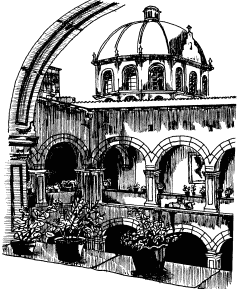As mentioned in an earlier post, Mexico is a predominately Catholic country. In 1980, 96% of Mexicans said they were Catholics; this dropped to 88% in 2000 and is estimated at about 80% in 2010. However, Catholicism seems to be maintaining its strength in Western Mexico.
In 2000, 96% of those in Guanajuato and Aguascalientes professed to be Catholic, followed closely by Jalisco, Querétaro, Zacatecas and Michoacán with 95%. Colima (93%) and Nayarit (92%) were not far behind.
The 1917 Constitution which followed the Mexican Revolution placed severe restrictions on the Catholic Church. It forbade churches from participating in primary and secondary education, it denied legal standing to religious marriages, and denied the right of church personnel to criticize the government or wear religious attire in public. These laws began to be rigorously enforced in 1926, stimulating the Cristero Rebellion by 50,000 armed devout Catholics in Western Mexico. This three year war cost 80,000 lives and reduced the number of priests in Mexico from 4,500 to only 334. Many Catholic leaders and followers immigrated to the USA.
Gradually, the severe restrictions were virtually all rescinded. In 1992 the government re-established diplomatic relations with the Vatican after over a century of estrangement. The last two Presidents of Mexico have come from the pro-Catholic PAN political party.
The geography of Mexico’s religions is discussed in chapter 11 of Geo-Mexico: the geography and dynamics of modern Mexico.

Sorry, the comment form is closed at this time.